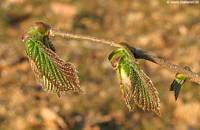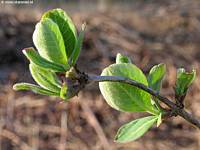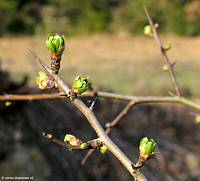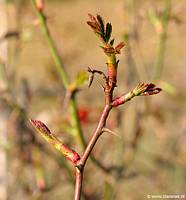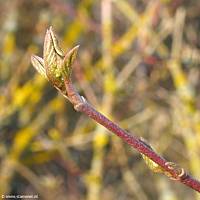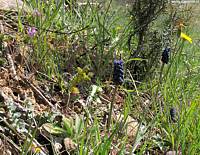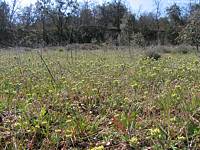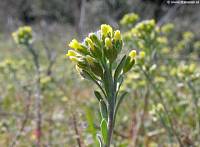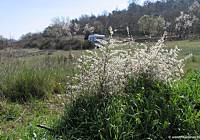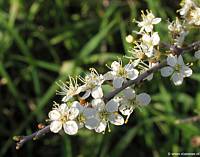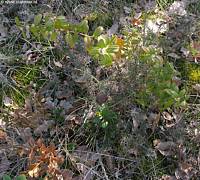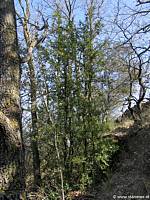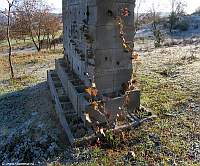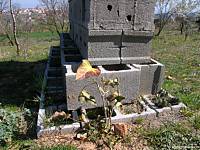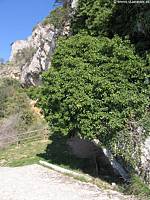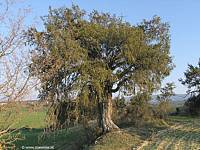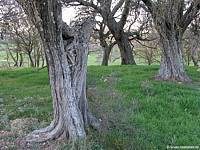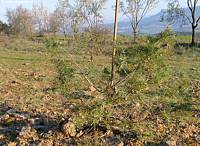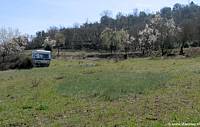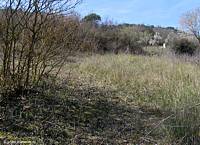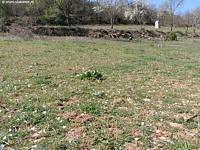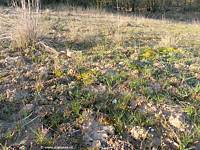|
|
Nature
Switched On
|
|
|
introduction |
2007 March 17 & 18, Saturday & Sunday Spring will be here soon and then things will be going very fast. In order to detain the course of events, here some stills of opening buds.
|
|
|
Corylus avellana, illuminated by
the first sunrays.
|
Lonicera xylosteum
with the characteristic hairs on the leaves. Sunday 7:23 |
|
|
Crateagus monogyna |
Rosa canina |
|
|
Cornus sanguinea |
||
|
The first bulb to flower on the terrain resulted to be the Grape Hyacinth (Muscari neglectum) here in the company of the annual Henbit Deadnettle (Lamium amplexicaule) on the left and Catsear (Hypochaeris radicata) on the right. Massively flowering in some parts is another annual: Small Alison (or Pale Madwort; Alyssum alyssoides).
|
||
|
End of winter composition. Saturday 11:58 |
||
|
Alyssum alyssoides. On the higher terrace in the centre. Sunday 11:25 |
Alyssum alyssoides.
Almost distinguishable in this close-up are the typical star hairs
on leaves and stem. Sunday 11:28 |
|
|
There are many Blackthorn shrubs (Prunus spinosa) on the terrain but only this one was completely in bloom. With the berries of this shrub they make the typical alcoholic drink of Navarra: Pacharan.
|
||
|
Blackthorn at the entrance to the terrain. Saturday 11:47 |
Sunday 7:36 | |
|
|
||
|
Flowering Common Box. In the left corner at the bottom the leaves
have still the typical brownish winter colour. Saturday 14:02 |
||
|
4 metre tall Box shrubs on the
border of the wood. Saturday 13:57 |
||
|
In his well-known and inspiring book 'Wildlife
Gardening', Chris Baines talked about the courage needed to cut
Common Ivy (Hedera
helix) down to 10 cm above the ground. Well, I took up all my
forces and did it. The idea is to stimulate the roots and especially
the potential of the plant to stick to walls. When I planted the Ivy
in the autumn it had very long trails and it seems that it is very
difficult for them to stick like this as can be seen on the first
photograph taken more than 2 months ago. On an excursion to a nearby abandoned village we discovered this centenarian Common Ivy. Its trunk had a diameter of about 22 centimetres. Will my tiny and now mutilated plant ever reach this 'cathedral' size? The limiting factor will probably be the cement stone wall which can't compete with solid rock.
|
||
|
Common Ivy planted at the foot of the 'biowall'. Photograph taken on 7 Jan 2007 9:59 |
After the operation. Sunday 11:38 |
|
|
Age old Common Ivy near an abandoned village. Sunday 14:40 |
||
|
More centenarians were discovered on a plot in the middle of cereal fields about 2 kms from our terrain: age-old Portuguese Oaks (Quercus faginea) and Prickly Junipers (Juniperus oxycedrus). Still quite green and vital but the farming of the cereal field had clearly damaged some roots of the Juniper in the first photograph.
|
||
|
A centenarian Prickly juniper. On the cereal field on the right
some damaged roots can be seen. Saturday 17:03 |
Two Prickly junipers and at the
background some Portuguese Oaks. Saturday 17:11 |
|
|
There are about two dozens of Prickly Junipers on our terrain
with hopefully a very long life ahead of them.. Sunday 7:10 |
||
|
A peculiar phenomena is the presence on the terrain
of Couch Grass (Elytrigia repens), generally notorious
as an invasive, nitrophile weed which needs some soil humidity. It
grows on the highest part of the lowest terrace in very distinct
patches. It must have something to do with the spread of their
vigorous rhizomes but its specific location also might indicate the
infiltration of water and nutrients (fertilizers from the past?)
from the higher terraces. Usually considered undesirable but on our
terrain it represents a specific habitat of relatively long grass
and I noticed for example the presence of a moss layer which was
completely absent in the surrounding area.
|
||
|
A circular patch of Couch grass near the entrance: Saturday 11:48 |
||
|
A similar patch in the lower
centre of the terrain. Saturday 11:41 |
||
|
The earthworms had also waken up. I have already talked about their extraordinary behaviour on 21 October 2006. On the former place of the caravan (we moved it 5 meters to the west) where the soil was a bit barren and compacted by our trampling, they had been again surprisingly active. A nice way of loosening the soil. |
||
|
The ground in front of the former location of the caravan. Sunday 11:18 |
Worm heaps in the higher centre.
Agrostis castellana,
Avenula bromoides
and moss. Sunday 7:08 |
|
|
introduction
|
|
|
